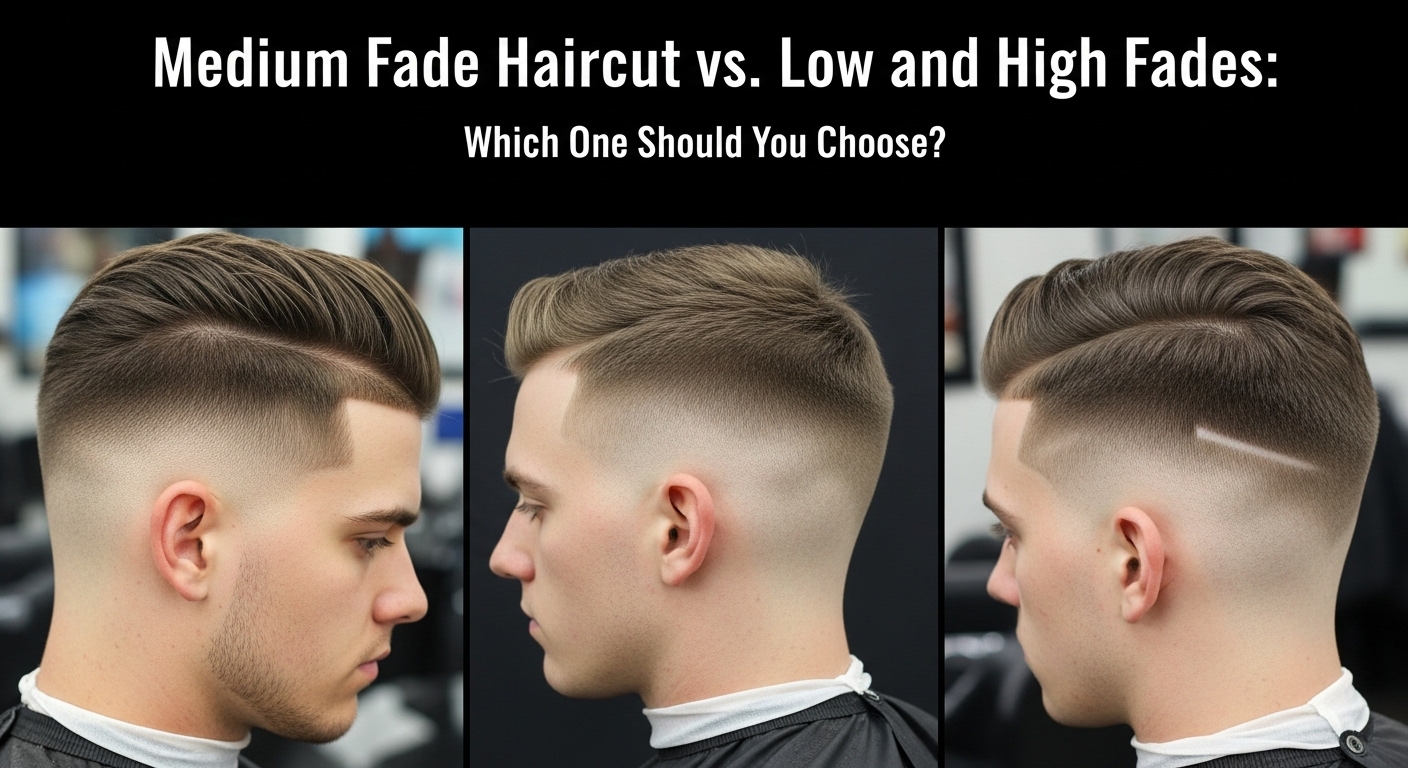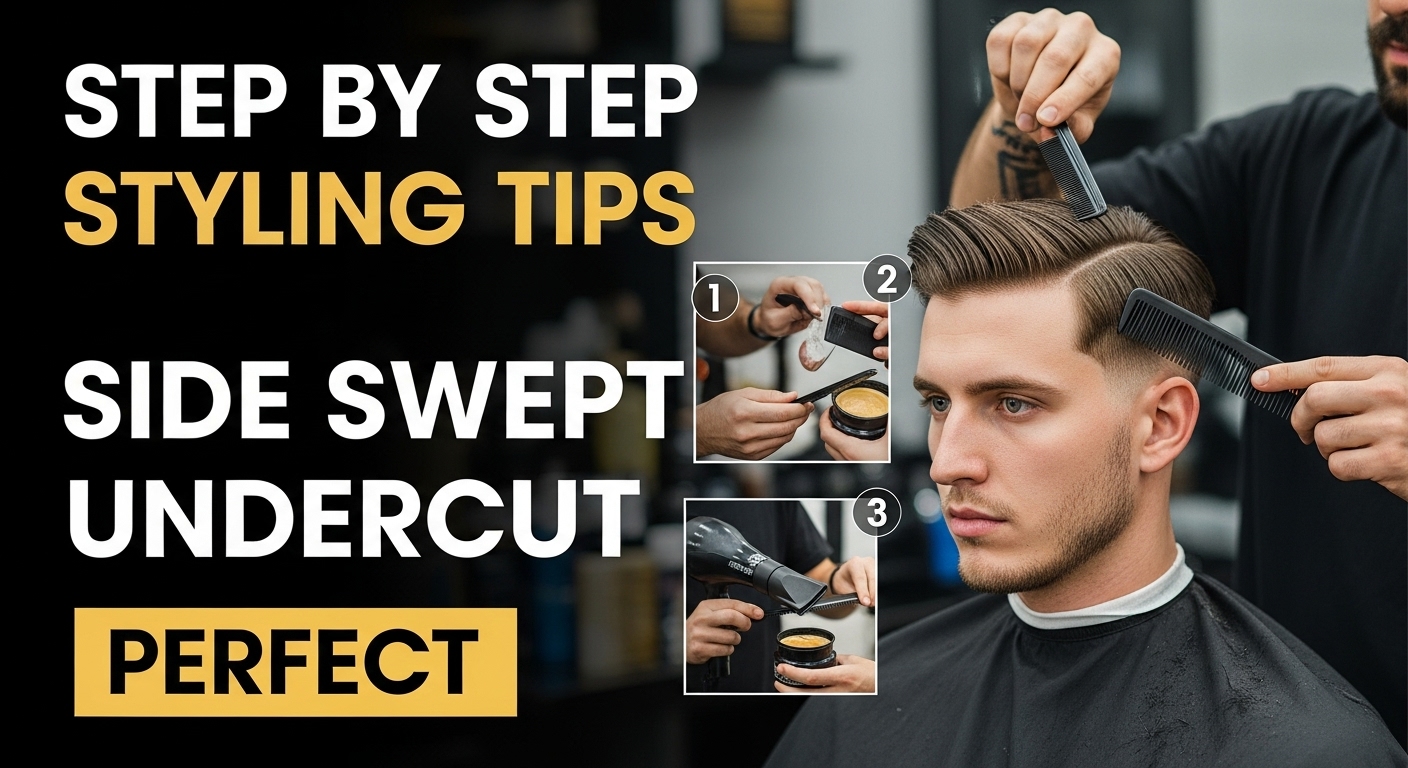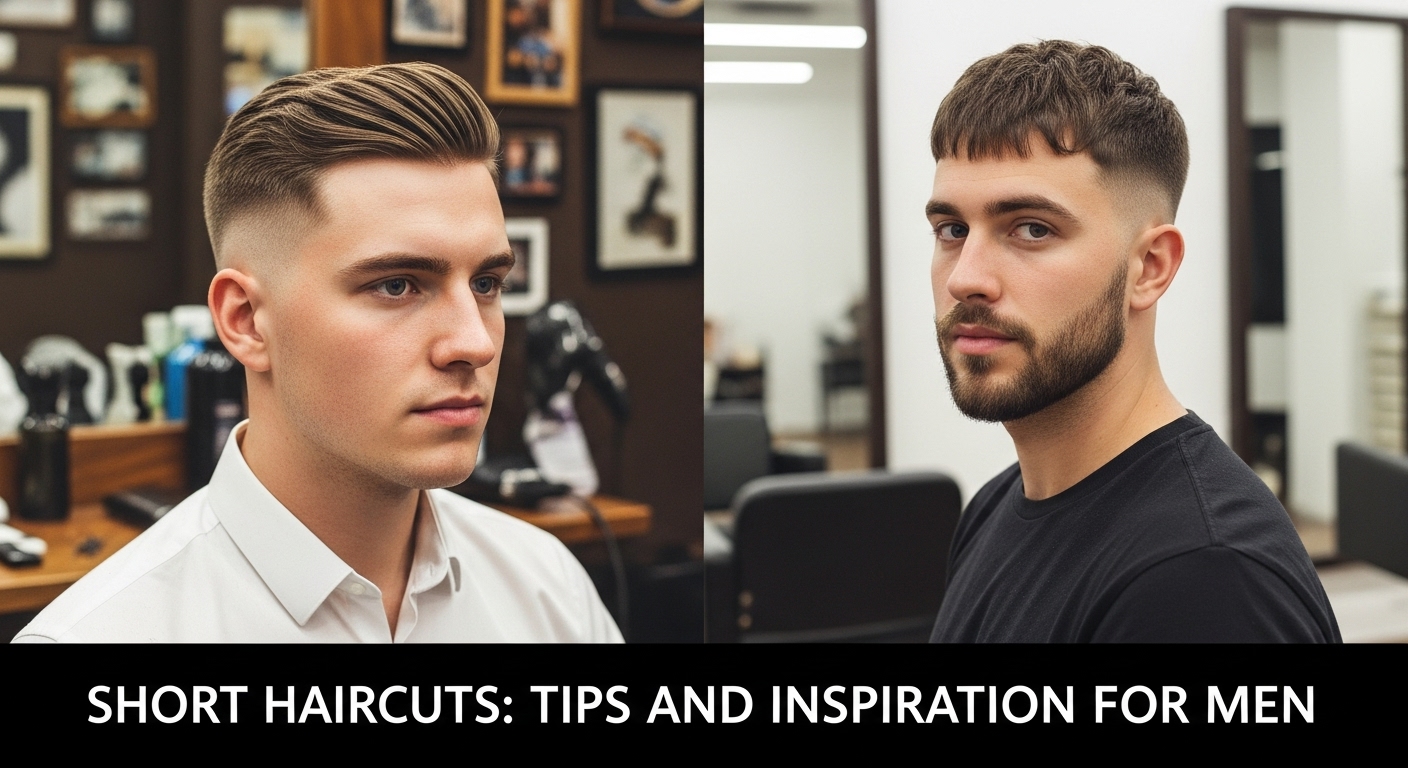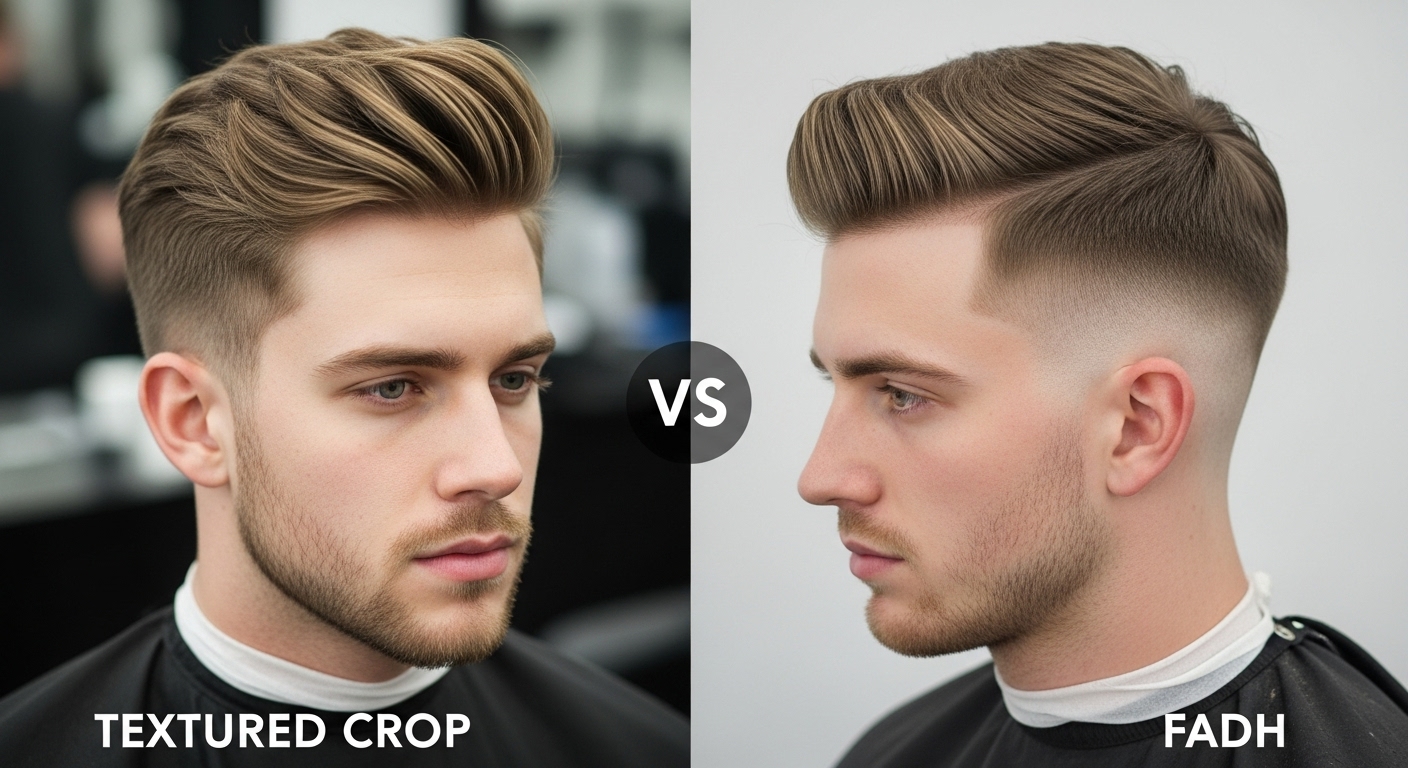Hasn’t it ever been a bit amusing that though your haircut is totally new and unknown, still somehow your personality reflects through your hair and you even feel different after stepping out of the shop? The medium fade haircut has been one of those haircuts that literally gives you a pleasing and comfortable feeling. It is neither too sharp and bold like a high fade nor not as subtle as a low fade. But in fact, that middle ground is what makes it a great topic to talk about. There are so many different types of fades for men, most of them fashionable and hyper-stylish, that today’s guys are really spoilt for choice. One can find everything from high skin fades to temple fades, drop fades, bald fades, mid fades through pictures on Instagram that it sometimes feels like there are just too many different kinds of fades to even keep track of.
However, the moment you understand the difference between a medium fade and the rest, figuring out which style best fits your vibes will become a piece of cake.
What Exactly Is A Medium Fade Haircut
A medium fade haircut is a haircut that is sometimes referred to as a mid fade and is located between the temple and just above the ears. The transition continues halfway up the sides, where the shorter buzzed sections are mixed with the longer hair on top. The difference in hair between a high fade and a medium fade is not very pronounced, but the medium fade definitely gives more contrast than a low fade.
The medium fade is the perfect choice for a man who wants a versatile hairstyle. It is not only suitable for casual use, but it will also show a very nice face with a formal suit — especially when paired with a flat top haircut for a sharper, more defined look.
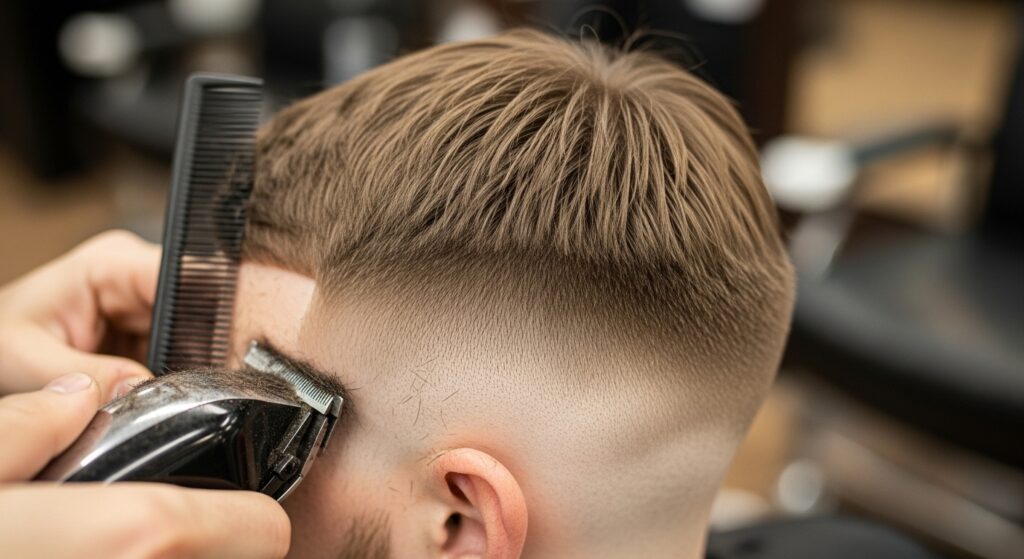
Medium Fade vs. Low Fade
First of all, there is a low fade. A low fade haircut will begin the tapering just above the ears and extend to the neckline. The changes are less dramatic in this style.
The medium fade, however, brings out an additional aspect of the haircut. Because the fade starts higher, the sides look more compact and the top hair stands out more visually. In a sense, it makes more difference.
| Fade Type | Where it Starts | Overall Look | Best For |
|---|---|---|---|
| Low Fade | Just above ears, neckline | Subtle, clean | Professional, conservative styles |
| Medium Fade | Midway up sides | Balanced, modern | Versatility, casual to formal |
| High Fade | Near temples | Bold, striking | Edgy, fashion-forward looks |
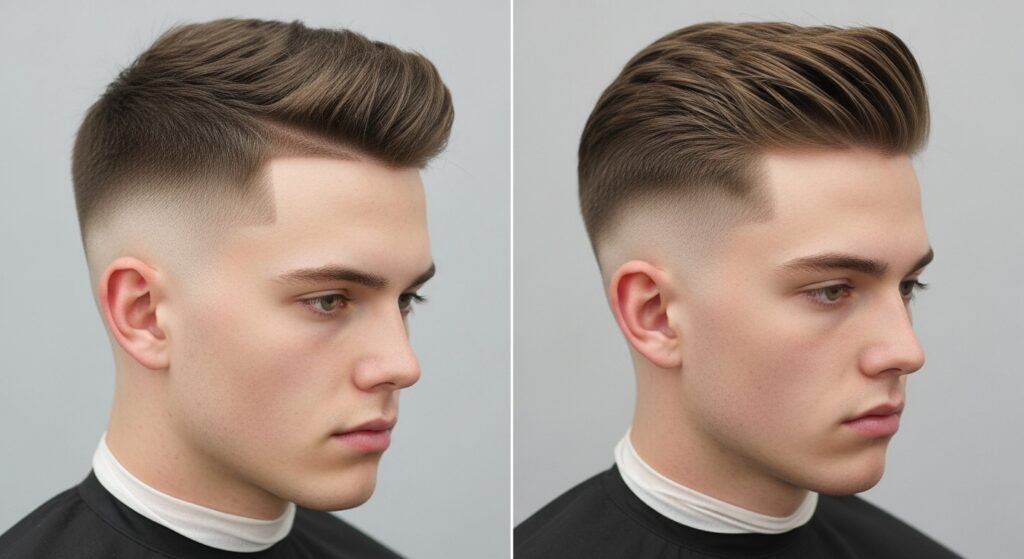
Medium Fade Vs. High Fade
High fades are really out there. The off colors start pretty much at the top of the head, at times close to the temples. That is why the fade is more visible, and the haircut gives a slicker, sometimes harsher, impression.
Medium fades may not be as loud as high fades, yet they don’t lose the fresh charm. You can say that they are neither the one you blend with too low like a low fade nor the one you go full statement like a high fade.
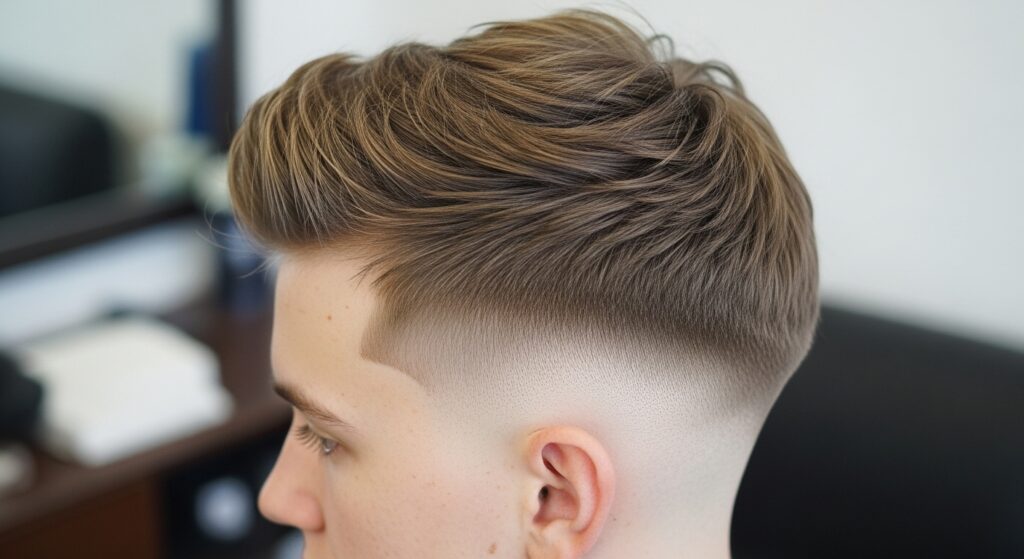
What Is The Best Fade For Your Face Shape?
Barbers are not really detail-oriented while explaining the point, but it is of great significance. Fades are not the only thing that they need to work with. Each face shape has its own best suitable fade.
- Round faces: A high fade lifts the head, thus making it appear narrower.
- Square faces: Medium fade tames the aggressive jawline but does not engulf it.
- Oval faces: The fortunate ones. The question never comes. Low, medium, and high fade—everything goes.
- Low fade: balances proportions better for long faces.
So, if you have a square or oval face, the medium fade haircut seems like a safe bet.
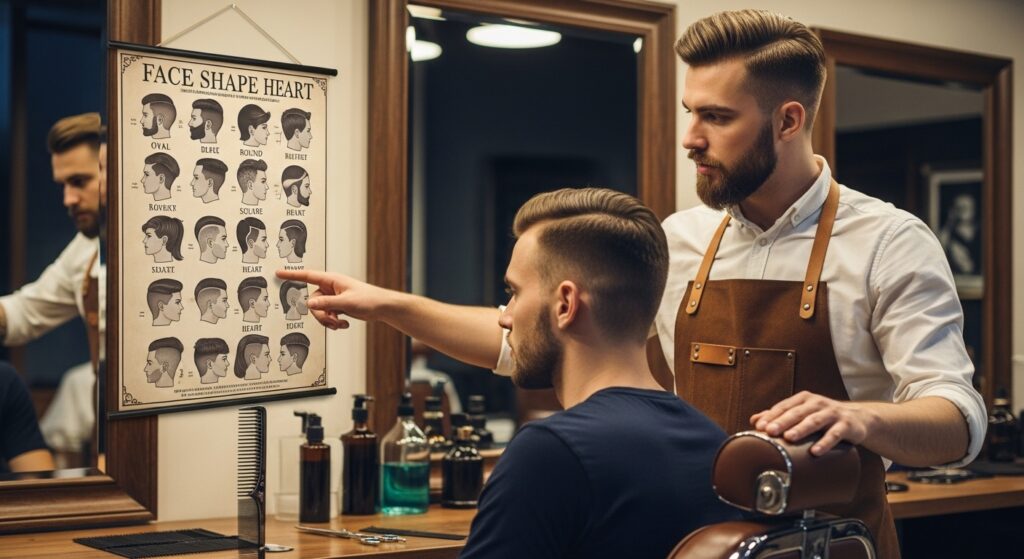
Styling a Medium Fade
The main attraction of medium fades is their simplicity in styling. They can be messy, sleek, spiky, or textured. Just a bit of matte clay and you’re set — or you can try a perm haircut with pomade or gel to achieve a sharper look.
Popular Styles with a Medium Fade
- Pompadour with medium fade
- Crew cut medium fade
- Textured fringe medium fade
- Buzz cut with a skin fade
- Slick back medium fade
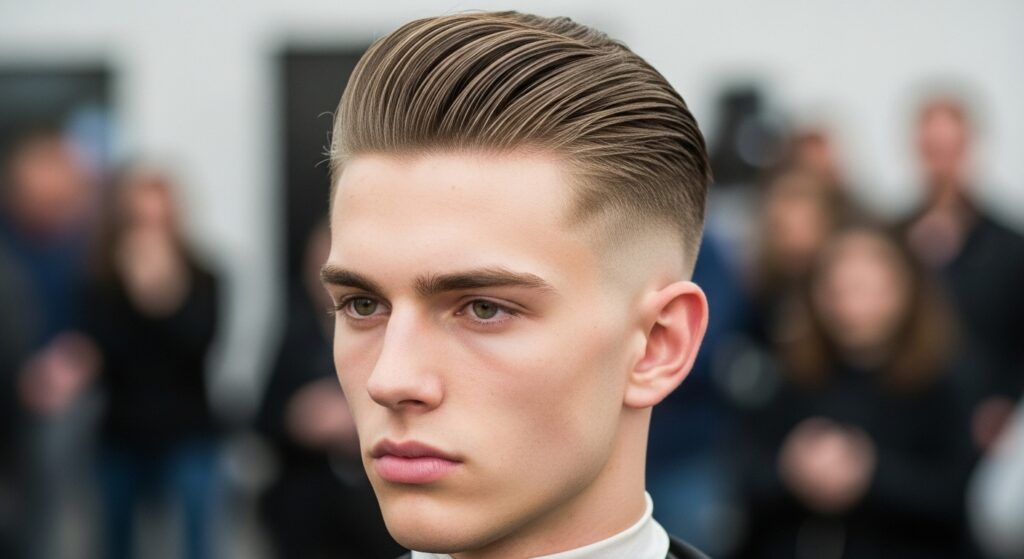
Skin Fade vs. Taper Fade vs. Medium Fade
It is a common issue that people misunderstand these terms. To put it simply, a taper fade gradually shortens only the area near the neckline and sideburns; a skin fade is where the hair is cut down to the skin entirely.
Depending on how it is cut, a medium fade can be a taper or a skin fade. That is the great thing about it you get to choose. Want a clean professional look? Go taper. Want bold? Go skin.
When to Ask Your Barber for a Medium Fade
Not always is it about what looks cool on the net. In fact, ask yourself the following:
- Workplace rules (some offices are not happy with edgy high fades).
- Hair texture (thick, curly hair can sometimes blend more easily with mid fades).
- Maintenance (medium fades don’t get as awkward when they grow out as high fades).
In case you are uncertain then just show your barber a photo. Most barbers opt for that rather than unclear descriptions.
Final Thoughts
Medium fades are not limited to one style only, they can be combined with different haircuts. They do not scream like high fades, but they are not as dull as low fades either.
They are the middle ground style that looks good with messy crops, tidy pomps, or even just regular buzzes. If you’re still hesitant, then just do it once. Hair will grow back, right?
FAQs
1. Is a medium fade haircut suitable for all hair types?
Yes, it can be, but it is more suitable for straight and wavy hair.
2. How often can I go for my fade?
Every 2 to 3 weeks is perfect, so it also depends on the speed of your hair growth.
3. What are the distinguishing features between a medium fade and a taper fade?
A taper fade only lightens up the area around the neckline and sideburns, while a medium fade makes the hair on the sides up to the middle of your head gradually shorter.
4. Can a beard be combined with a medium fade?
Of course, the fade can be blended with the beard for a clean, continuous look.
5. Is a medium fade professional enough for work?
Yes, it is not too conspicuous enough to look neat without being too bold, so it works in most workplaces.
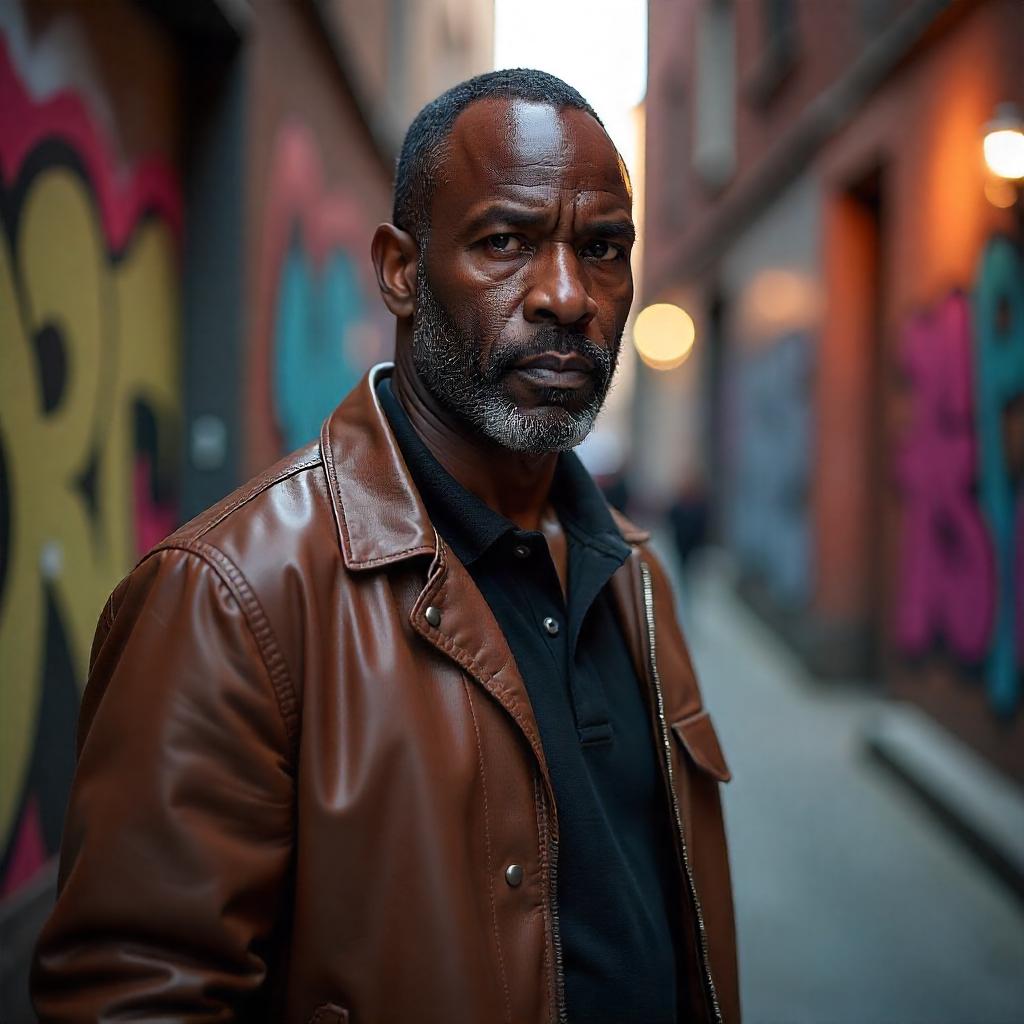
Alex Carey writes about men’s and women’s hairstyles, blending fashion insight with easy-to-follow haircare routines for every hair type. With a keen eye on seasonal trends, Alex helps readers stay updated on what’s hot and what’s not. From daily care tips to complete style makeovers, Alex covers it all.

